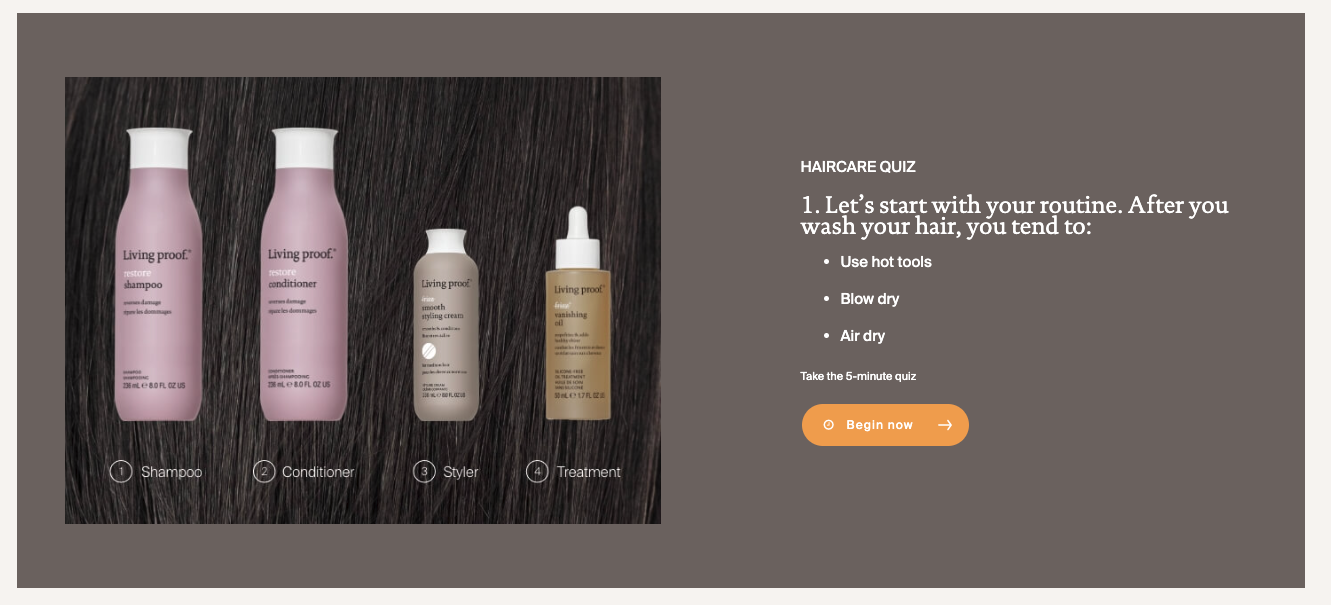
Which conditioner is right for your hair type? [expert advice]
Hair conditioner is a simple, in-shower treatment designed to improve the overall condition of your hair. Based on that, you might think that all types of conditioners are the same — but that’s not the case.
Just like shampoo, conditioner can be formulated to suit different hair types and address various haircare challenges. The right conditioner can give you healthy, soft shiny hair, while the wrong one can leave your hair looking and feeling worse.
The good news is that choosing the right conditioner for your specific hair type and texture is easy — we’re here to show you how.
What is the purpose of hair conditioner?
Hair conditioners help to restore moisture, reduce tangles, and protect against or repair damage caused by heat styling, chemical treatments, environmental factors, and daily wear-and-tear. Whether used alone or in coordination with shampoo, conditioner rehydrates hair, providing volume, control, suppleness, softness, and sheen.
Hair strands are covered by a protective outer layer called the cuticle, which is made up of overlapping cells like roof shingles. When hair is exposed to shampoo, heat, or harsh ingredients, the cuticle can lift, making hair feel rough, dry, and tangled.
Hair conditioners use ingredients known as cationic surfactants that possess a positive electric charge. The conditioner’s positive charge is attracted to the negative charge in human hair, making it easier for the conditioner’s nourishing ingredients to bond and soak into the cuticle. This process, known as cationic bonding, seals in moisture and reduces friction between strands.
Conditioners use a combination of ingredients to form a thin, protective layer over the cuticle that improves smoothness, shine, and strength. Without conditioner, hair can become dry, frizzy, and more prone to breakage. Depending on how a conditioner is formulated, it can contain any of the following:
- Emollients and oils such as argan oil, sunflower seed oil, and shea butter to soften and smooth hair
- Humectants such as glycerin, fructose, and aloe vera, which attract moisture and keep hair hydrated
- Cationic surfactants, which bind to hair and reduce frizz by smoothing the cuticle.
- Proteins such as keratin, hydrolyzed soy protein, and wheat protein that strengthen hair by filling in weak spots
- Acidifiers, which help maintain the right pH balance to keep the cuticle sealed
- Silicones, which coat the hair to detangle and provide shine
Not all ingredients are made alike. For example, while many conditioners use silicones to coat and smooth the cuticle they also prevent essential oils and nutrients from penetrating the hair, leading to further dryness and damage over time. That’s why Living Proof’s conditioners are developed without silicones.
The 10 different types of hair conditioners
Different hair types, textures, and challenges require different conditioners. Below is a breakdown of the ten most common types of conditioners, the hair types they’re suited for, and the challenges they help address.
- Hydrating or moisturizing conditioner restores moisture, softens hair, and prevents dryness, making it ideal for dry, coarse, or brittle hair. It helps combat dehydration, rough texture, and dullness, particularly for hair frequently exposed to heat styling, chemical treatments, or harsh weather.
- Strengthening, fortifying, or protein conditioner strengthens weak or damaged hair by replenishing proteins such as keratin. It is best suited for damaged, brittle, chemically treated, or color-treated hair and helps address breakage, split ends, and weak hair shafts.
- Volumizing or thickening conditioner adds body and fullness without weighing hair down, making it perfect for fine, thin, or limp hair. It addresses the challenge of flat, lifeless hair by using lightweight formulas that avoid heavy oils or silicones.
- Balancing conditioner helps maintain a proper moisture and oil balance, making it ideal for normal or combination hair, which is a mix of oily scalp and dry ends. It hydrates without making the hair greasy, which means it’s a great choice for people who don’t need heavy conditioning but still want smooth, manageable hair.
- Smoothing conditioner is designed to reduce frizz, enhance shine, and make hair more manageable. It works best for wavy, thick, or slightly frizzy hair and helps control flyaways, rough texture, and dullness by using smoothing agents to coat the hair shaft.
- Curly conditioner enhances curl definition while providing deep hydration, making it ideal for naturally curly, coily, or wavy hair. It helps combat dryness, frizz, and loss of curl shape by incorporating nourishing oils and butters that define curls and lock in moisture.
- Anti-frizz conditioner is specifically formulated to control humidity-induced frizz and smooth the hair. It is best for frizzy or thick hair and helps address flyaways, humidity-related fluffiness, and rough texture with anti-static agents and moisture-locking ingredients.
- Deep conditioner provides an intensive conditioning treatment for severely dry, damaged, or chemically treated hair. It strengthens weak, over-processed, or dull hair with concentrated nourishing ingredients and is typically used as a weekly treatment for long-term repair.
- Leave-in conditioner offers lightweight moisture, detangling, and heat protection throughout the day. Suitable for all hair types, but especially beneficial for curly, dry, or damaged hair, it helps with detangling, frizz control, and hydration without weighing hair down.
- Cream rinse conditioner is lighter than traditional conditioners and rinses out quickly, making hair easier to detangle and adding shine. It is best suited for fine, normal, or tangle-prone hair, helping to prevent knots and create a soft, silky finish without feeling heavy.
4 common hair types [+ how to determine which one you have]
Hair type refers to both the natural shape and pattern of your strands — which can be straight, wavy, curly, or coily — and the texture of individual strands, which is determined by their thickness or width. Knowing your hair type and texture can help you choose the right type of conditioner and styling techniques.
Type 1. Straight hair
Straight hair lacks any natural curl and lies flat from root to tip. It is typically smooth, shiny, and more resistant to frizz because natural oils travel easily down the hair shaft. However, it can also be prone to looking greasy quickly.
- Challenges: Oil buildup, lack of volume, and difficulty holding curls
- Textures:
- 1A — Thin, fine hair
- 1B — Slightly thicker, with more volume
- 1C — Straight, thick, and coarse
- Recommended conditioners: Lightweight, volumizing products to prevent flatness and limpness
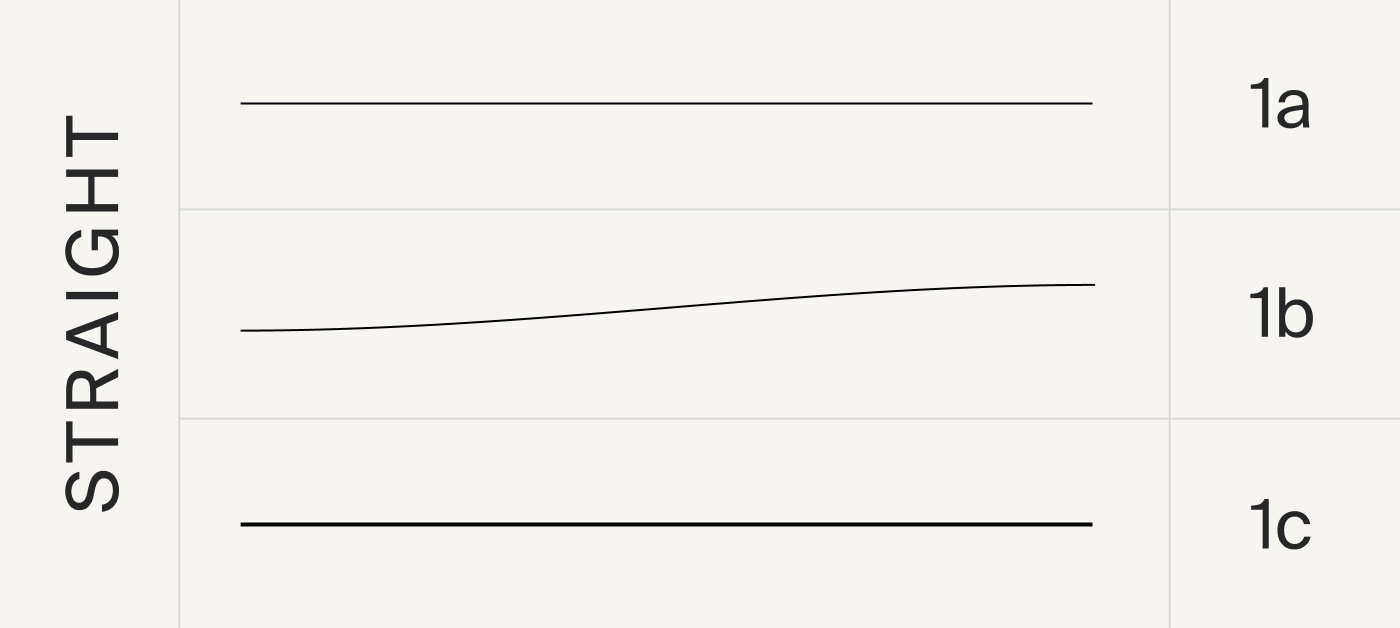
Type 2. Wavy hair
Wavy hair falls between straight and curly, with a loose "S" shape. It has more body and texture than straight hair but isn’t as tightly coiled as curly hair. Wavy hair is versatile but can be prone to frizz, especially in humid conditions.
- Challenges: Frizz, inconsistent curl patterns, and lack of definition
- Textures:
- 2A — Thin and fine with slight waves
- 2B — Slightly thicker waves that start about mid-length
- 2C — Deep, coarse waves that start at the scalp
- Recommended conditioners: Lightweight moisturizers, anti-frizz products, and curl-enhancing formulas
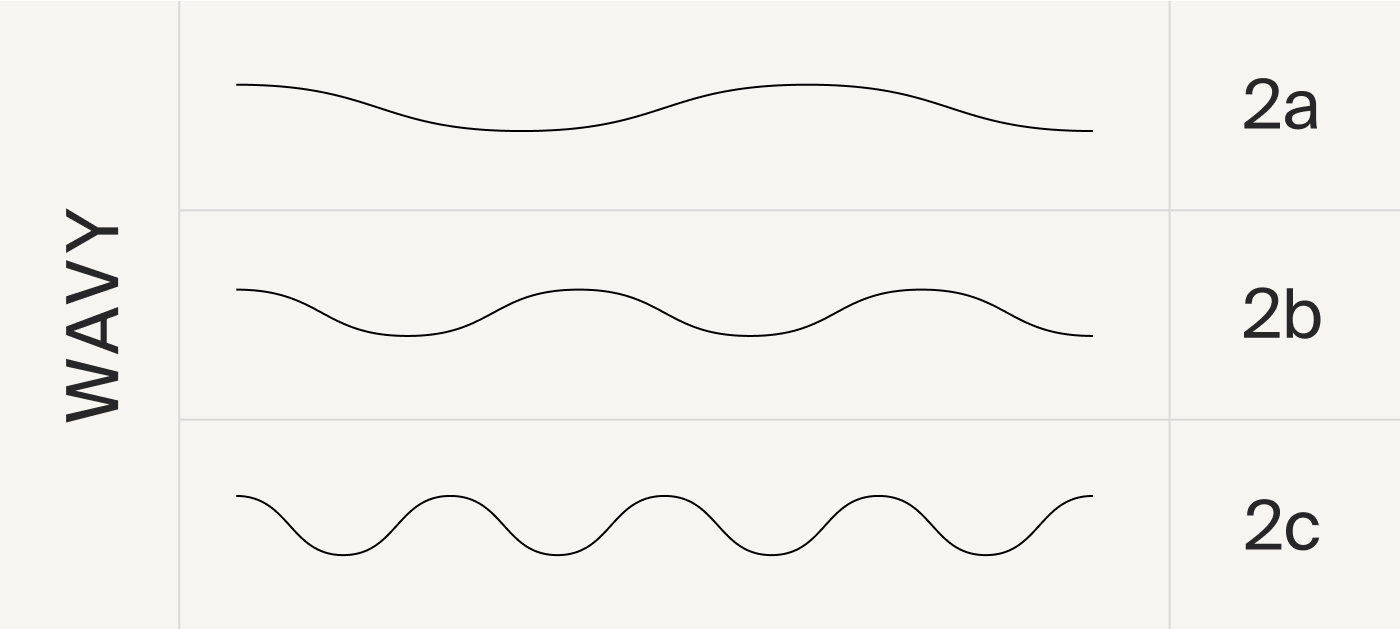
Type 3. Curly hair
Curly hair forms distinct ringlets or spirals and tends to have more volume and bounce. Because of its shape, natural oils don’t travel as easily down the shaft, making curly hair drier than straight or wavy hair.
- Challenges: Dryness, frizz, tangling, and loss of curl definition
- Textures:
- 3A — Fine, loose, wide S-shaped curls
- 3B — Slightly thicker, medium curls with more volume
- 3C — Small, tight curls that are corkscrew-shaped
- Recommended conditioners: Moisturizing and curl-defining products
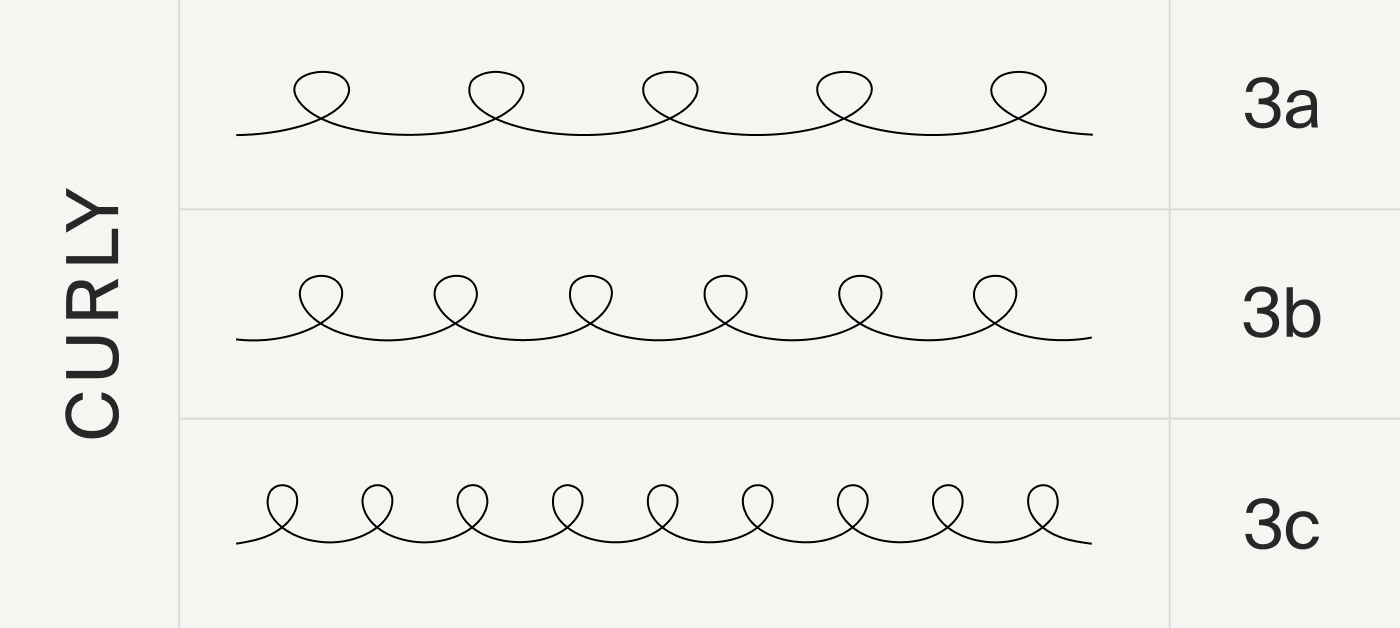
Type 4. Coily hair
Coily hair, also known as tight curly, kinky, or Afro-textured hair, has tight curls or zigzag patterns. It is the most fragile hair type because its structure makes it more prone to breakage and dryness.
- Challenges: Dryness, shrinkage, breakage, and difficulty retaining moisture
- Textures:
- 4A — Soft, subtle coils with a spiral pattern
- 4B — Z-shaped pattern with tiny spirals that bend at sharp angles
- 4C — Strong, tight coils that can be thick, coarse, and wiry
- Recommended conditioners: Deep-conditioning treatments, leave-in conditioners, and rich oils

To understand your hair type, try washing your hair and letting it air dry naturally to see what it does:
- If it dries completely straight with no bends or waves, you have straight hair.
- If it dries with a slight wave or loose S-shape, you have wavy hair.
- If it dries with defined curls or ringlets, you have curly hair.
- If it dries with tight curls, coils, or a zigzag pattern, you have coily hair.
For texture, you can take a single strand of clean, dry hair and roll it between your fingers
- If you can barely feel it or it seems almost invisible, you have fine hair.
- If you can feel it but it’s not extremely thick, you have medium hair.
- If it feels thick and coarse between your fingers, you have thick hair.
If you’re not sure about your type or texture, you can always consult your hairstylist.
Common hair challenges
Just like shampoos, different types of hair conditioners are designed to address different challenges. And while anyone could experience these challenges, people with certain hair types and textures are more prone to them than others. For example, straight hair is more likely to be oily, while coily hair is more likely to be brittle.
Here are some of the most common hair challenges, their causes, and which hair types are more prone to them.
Oily hair
Oily hair occurs when the scalp produces excess sebum [natural oil], which can make hair look greasy and feel heavy. Some people naturally produce more sebum than others, but frequent washing can also strip hair of its natural oils, causing the scalp to overcompensate by producing even more oil. People with straight and fine hair are more prone to oily hair, as the smooth texture allows oil to travel quickly from the scalp to the ends.
Limp hair
Hair is considered “limp” when it lacks volume and appears flat or lifeless. Product buildup over time can wear hair down, as can excess oil production and frequent heat styling. Fine or thin hair is more likely to be limp, as it has less natural volume and lacks the structure of thicker hair types.
Dull hair
Dull hair — often caused by a lack of moisture — lacks shine and vibrancy. Using products with harsh sulfates and overusing heat-styling tools can damage the cuticle and reduce moisture. The texture of curly and coily hair makes it harder for natural oils to travel down the strands, leading to dullness.
Dry, damaged hair
A lack of moisture and elasticity can make hair look and feel rough. Overwashing, excessive use of hot tools, and chemical treatments will strip hair of moisture and weaken its structure. Environmental factors such as sun exposure, hard water, and pollution can also damage hair. Curly and coily hair are prone to dryness, as is thick or coarse hair, which can lose moisture more quickly than finer hair.
Brittle, breakage-prone hair
Brittle hair breaks easily and often has split ends. Just like other challenges, brittle hair is often a result of excessive heat styling and overuse of treatments. A lack of protein can also make hair more prone to breakage, as can wearing tight hairstyles often or over long periods of time. Because curly and coily hair are prone to dryness, they’re also at risk for breakage. Also, fine hair can be easily damaged because it is so delicate.
Frizzy hair
Frizz occurs when the hair cuticle is raised, allowing moisture to enter and swell the strands. As a result, neighboring hairs lay out in different directions, causing them to look disordered. Both a lack of moisture in the hair and high humidity can cause frizz — dry hair is more likely to absorb moisture out of the air. Heat damage is also likely to cause frizz. The uneven cuticle of curly and wavy hair makes them more susceptible to frizz.
How to choose the right conditioner [in four easy steps]
Understanding your hair type and its challenges makes it easier to know which conditioner you should use to repair and protect your hair. Every head of hair is unique, so experiment with different products to see what works best, but start with these guidelines for how to select the best type of conditioner.
If your hair is…
- Oily, You should use…a lightweight, balancing, or volumizing conditioner to avoid buildup
- Limp or fine, You should use…a volumizing conditioner that won’t weigh hair down
- Dull, dry, or damaged, You should use…a hydrating or deep conditioner with rich ingredients
- Brittle or breakage-prone, You should use…a protein/fortifying conditioner to strengthen weak strands
- Frizzy, You should use…a smoothing or anti-frizz conditioner to control flyaways
Be sure to check the ingredients on your conditioners, as well. Conditioners with study-backed oils can replenish stripped sebum and seal hair cuticles to retain moisture. To protect your hair, you should prioritize conditioners that are free of silicones, parabens, and formaldehyde.
Four Steps to Your Perfect Hair Conditioner
- Determine your hair type
- Identify your unique hair challenges
- Explore different conditioners based on your challenges and hair type
- Select your brand of conditioner based on your needs and its ingredients
FAQs
Who needs to use hair conditioner?
Everyone can benefit from the softness, shine, and protection against damage that conditioner offers. Conditioner delivers deep hydration to dry, damaged, curly, or coily hair, while lightweight formulas can add moisture to fine or oily hair. If your hair is frizzy, brittle, or color-treated, a smoothing or strengthening conditioner will be best.
How do I use hair conditioner?
Use conditioner after shampooing. Apply conditioner to the mid-lengths and ends of your hair, avoiding the scalp. Let it sit for one to five minutes, depending on the product, then rinse thoroughly with lukewarm water. For deep conditioners, leave on for 10–20 minutes before rinsing. Leave-in conditioners should be applied to damp hair for added moisture and protection — no rinsing needed.
How often should I use hair conditioner?
How often you use conditioner depends on your hair type, texture, and challenges. For dry, damaged, curly, or coily hair, use conditioner every wash to maintain moisture. Fine or oily hair may benefit from conditioning every other wash or using a lightweight formula. Deep conditioners should be used once a week, while leave-in conditioners can be used daily for extra hydration and protection. Your hair can change over time, so always adjust based on your hair’s needs.
Can I skip conditioning my hair?
Skipping conditioner occasionally won’t harm your hair, but regularly skipping it can lead to dryness, tangles, and breakage, especially for dry, curly, or damaged hair. Fine or oily hair may feel weighed down with heavy conditioners, but a lightweight or balancing formula is still beneficial.
Living Proof conditioners — science-backed formulas for every hair type
Whether you have bleached waves or springy curls, your hair deserves a conditioner that protects its strength and beauty. Not sure where to look? Living Proof is here to help you start your search. From our volumizing Full Conditioner to our rich Restore Conditioner, we craft each formula to bring the best out of every hair type.
- Perfect hair Day™ Conditioner conditioner hydrates, strengthens, and adds serious shine to dull, dry strands.
- Full Conditioner adds softness and shine — without the extra weight — and detangles hair so it looks like it’s naturally fuller.
- frizz ® Conditioner eliminates frizz, blocks humidity, and adds shine for smoother, healthier-looking hair.
- Restore Conditioner smooths, repairs, and protects hair, leaving it visibly healthier.
- Curl Conditioner is formulated to moisturize and detangle all curl types to visibly define curls.
Every Living Proof conditioner is free of silicones, parabens, and formaldehyde — we only use the safest, most nourishing ingredients to give your hair its healthiest look.
Find the conditioner that’s right for you — plus a full line of personalized product recommendations — by taking our haircare quiz.
- MDPI, “Known and Unknown Features of Hair Cuticle Structure: A Brief Review, https://www.mdpi.com/2079-9284/6/2/32.”
- The Physics Classroom, “Specular vs. Diffuse Reflection, https://www.physicsclassroom.com/class/refln/Lesson-1/Specular-vs-Diffuse-Reflection.”
- Living Proof, “Discover the Anatomy of Hair, https://www.livingproof.com/hair-101/anatomy-of-hair-cuticle-cortex-f-layer.html.”
- Living Proof, “The effects of hard water on hair [+ how to treat it], https://www.livingproof.com/hair-101/hard-water-hair.html.”
- Living Proof, “How to Protect Your Hair from Sun & UV Damage [+ 8 Summer Haircare Tips], https://www.livingproof.com/hair-101/protect-hair-in-the-sun.html.”
- Living Proof, “What is clarifying shampoo? [+ how & when to use it], https://www.livingproof.com/hair-101/clarifying-shampoo.html.”
- Living Proof, “What is Low Hair Porosity?, https://www.livingproof.com/hair-101/what-is-low-hair-porosity.html.”
- Living Proof, “How to Use Dry Shampoo the Right Way for Best Results, https://www.livingproof.com/hair-101/how-to-use-dry-shampoo-the-right-way-for-best-results.html.”
- Living Proof, “Does Heat Protectant Spray Actually Work?, https://www.livingproof.com/hair-101/does-heat-protectant-spray-work.html.”
- Living Proof, “The Secret to Air-Drying Your Hair, https://www.livingproof.com/hair-101/air-dry-your-hair.html.”
- Living Proof, “How to Protect Your Hair from Sun & UV Damage [+ 8 Summer Haircare Tips], https://www.livingproof.com/hair-101/protect-hair-in-the-sun.html.”
Related Articles
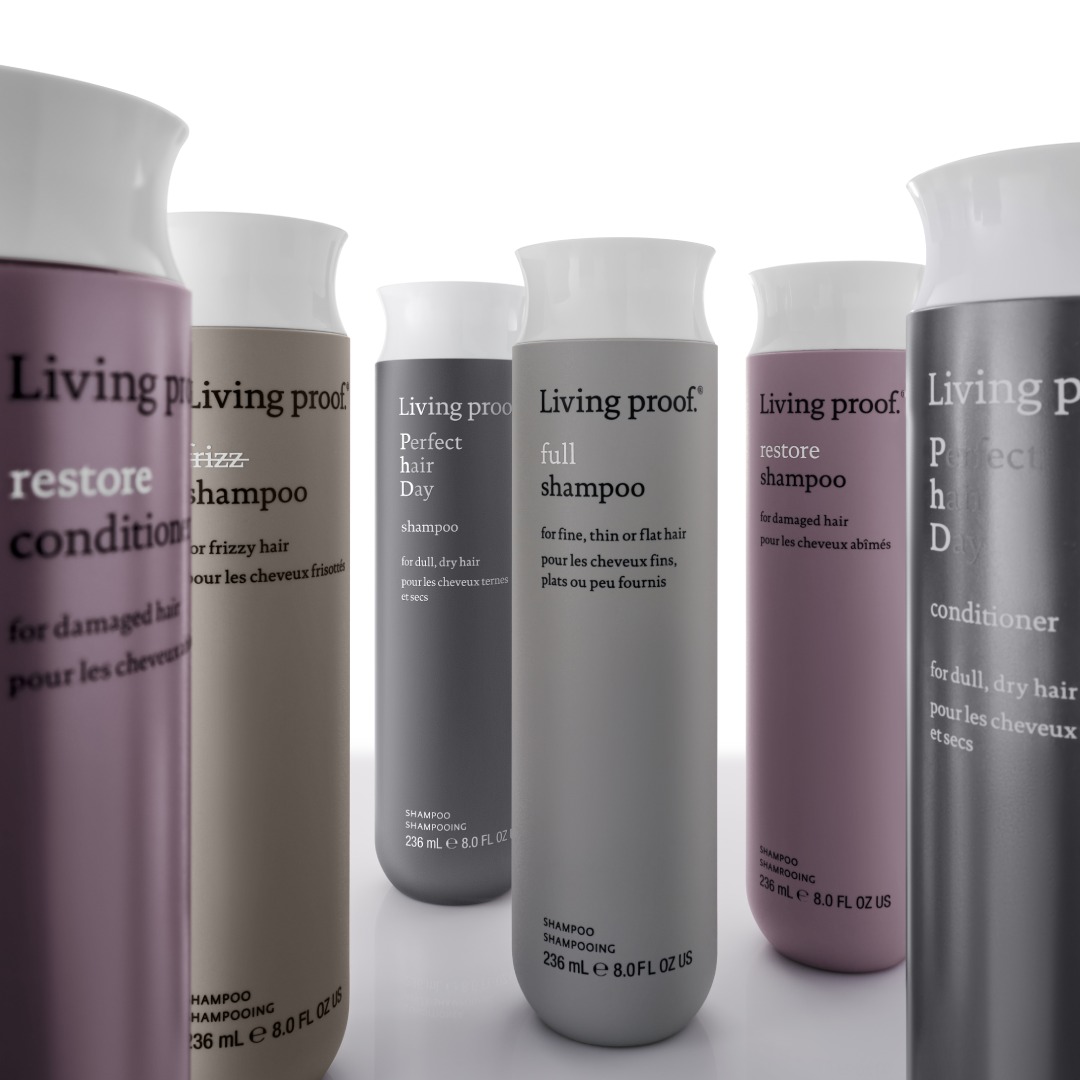
Does your hair get used to products? [Why you don’t actually have to swap out your shampoo + conditioner]
Read More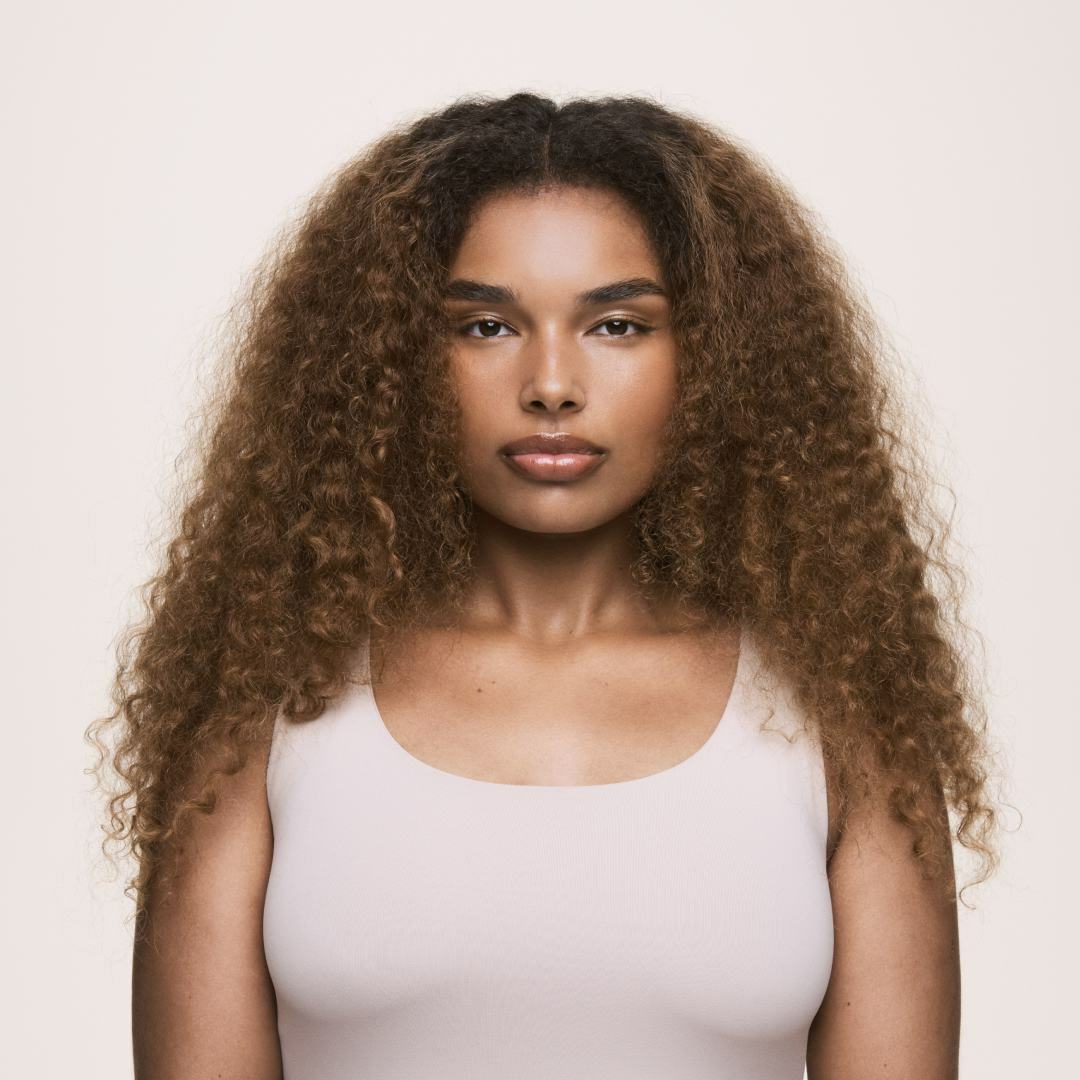
Which conditioner is right for your hair type? [expert advice]
Read More